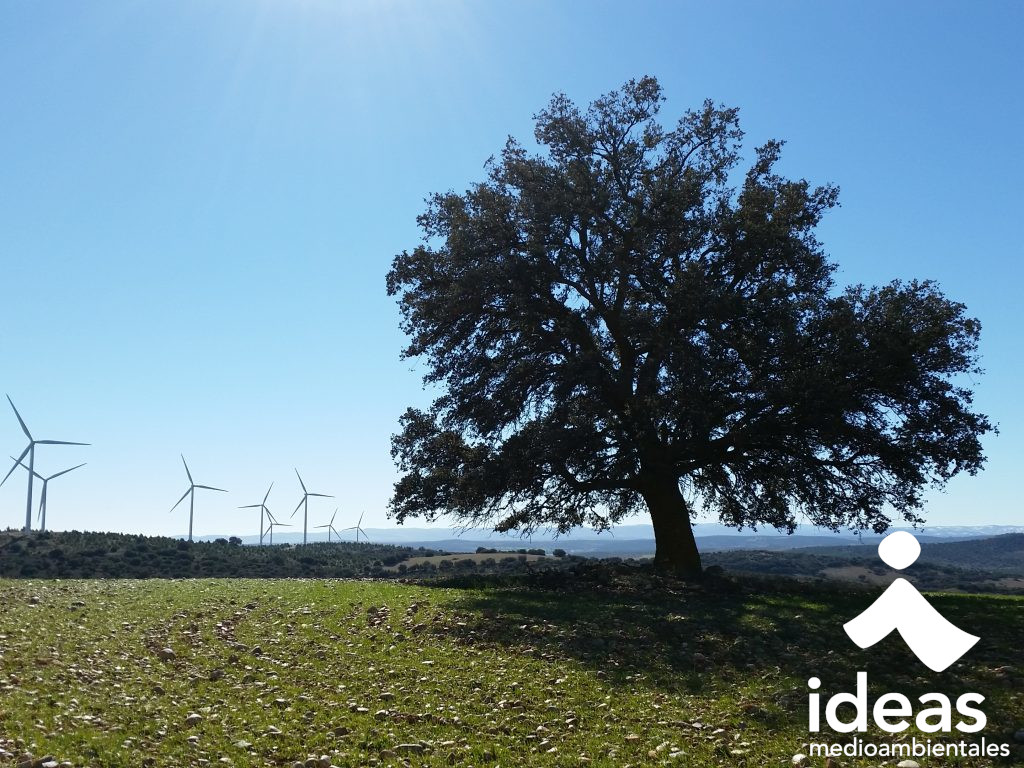How far apart should wind turbines be placed?
After more than fifteen years participating in the planning and implementation of wind farm projects in Spain and despite the uncertainty experienced by renewable energies, such as wind energy, Ideas Medioambientales continues to be asked the same question over and over again: how far apart should wind turbines be placed? Our answer to this question is immediate because it is founded on our own experience in wind farms projects. However, it is not so simple when the question is: what are the regulations regarding wind turbine spacing? because there is a large volume of information on this matter. Therefore, in this post we will analyse different information regarding wind turbine spacing and alignment and current regulations.
Best performances & shadow effect
Firstly, we will focus on the “Cátedra Endesa Red”. Óscar Alexis Monzón Alejandro in his project “Diseño de una Central de Generación Eólica de 20 MW” indicates that the distance between wind turbines in the same row should not be less than the diameter of 2 rotors. He also states that the distance between wind turbines in different rows should always be greater than 8 diameters. The reason for these minimum distances is the importance to minimize the shadow effect of some wind turbines on others.
Therefore, here is our first finding: “Correct wind turbine spacing is important to avoid shadow effect”.
Dr. Charles Meneveau, a researcher at Johns Hopkins University (US), developed a model to calculate the optimal spacing between turbines to obtain the best performance in large wind farms. Using large-scale computer simulations and small-scale wind tunnels for 5 MW wind turbines concluded that the optimal spacing between the turbines should be approximately 15 times the diameter of the rotor.
The “Cuaderno de Aplicaciones Técnicas No. 12” titled “Wind power plants of the ABB company” indicates that the wind turbines must be located at an adequate distance between them to avoid aerodynamic interference and two other most serious consequences: the increase in turbulence and the loss of power. The optimum spacing is set between 8 and 12 times the rotor diameter in the direction of the wind, and between 2 and 4 times in the direction perpendicular to the wind.
Words such as “shadow effect”, “performance” and “power loss” have been highlighted, all of them related to the efficiency of the turbines. However, spacing between wind turbines has not been discussed yet from the environmental point of view.
The Decree 32/2006 of 27 March, which regulates the installation and operation of wind farms in the Canary Islands is an example of current laws regarding regulations of wind farms. Article 25 of this document focuses on potential distances from wind turbines to homes or other wind turbines. Section 2 of this article indicates that the minimum distance between two wind turbines in the same line will not be less than 2 rotor diameters, and the distance between two lines in the same park must be at least 5 rotor diameters. This regulation does not appear to be due to performance reasons but neither (we believe) to environmental issues.
Enviroment impact
Reviewing various Environmental Impact Statements of wind farm projects in which we have participated (exactly, 54), we found that the limitations on turbine spacing vary by territories within Spain. However, there are some common rules followed by most of them. For wind turbines on the same row, the distance among them will be of 3 times the length of the rotor diameter. In the case of turbines on different rows, the spacing among then will be of 7 times the length of the rotor diameter. Since the same specific ratios are used in various Environmental Impact Statements, they could be defined as an “environmental standard”. However, we are not totally sure these ratios are based on environmental evidences, since they are probably based on the technical studies stated at the beginning of this post.
In order to obtain further information on this matter, we reviewed a large number of sources of information regarding environmental impact of wind farms. However, we did not find any criterion for turbine distance placement intended to reduce the impact of windfarms on wildlife.
We also reviewed the publication titled: “Understanding bird collisions at wind farms: An updated review on the causes and possible mitigation strategies” (Marques et al. 2014), which states, based on literature review, that the positions of the wind turbines within a row did not influence the turbine fatality rate of Griffon vultures (Gyps fulvus) at Tarifa (Spain) (De Lucas et al. 2012). This publication also stated that the distance between turbines has increased in the last years since the newest wind turbines (3 MW machines with rotors of up to 125 m) require a larger minimum distance between adjacent turbines. Therefore, in new wind farms it is less likely that birds perceive rows of turbines as impenetrable walls. In fact, Cárcamo et al. 2011 found in Greece that the longer the distance between wind turbines, the higher is the probability that raptors will attempt to cross the space between them.
As a conclusion, when we try not to consider only wind turbine efficiency as a factor, we cannot find an evident environmental criterion to assess the optimal spacing between wind turbines. Nevertheless, all the experience obtained during the operating phase and the environmental monitoring of wind farms, as well as the general guidelines described in this post, should continue to govern the decisions of project designers, managers and evaluators.
We hope this lack of information regarding an environmental point of view will reopen the debate on turbine spacing and we could obtain further information we might not be aware of about this matter. In the meantime, we are adding this piece of knowledge to the post published in 2015 so people could check for compliance of equipment.
